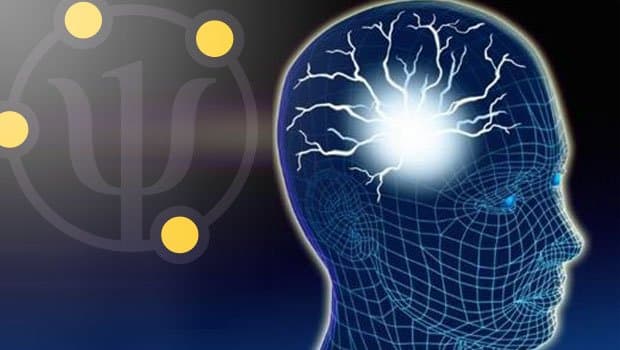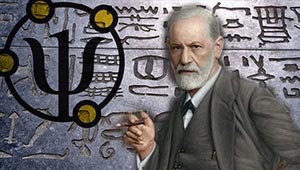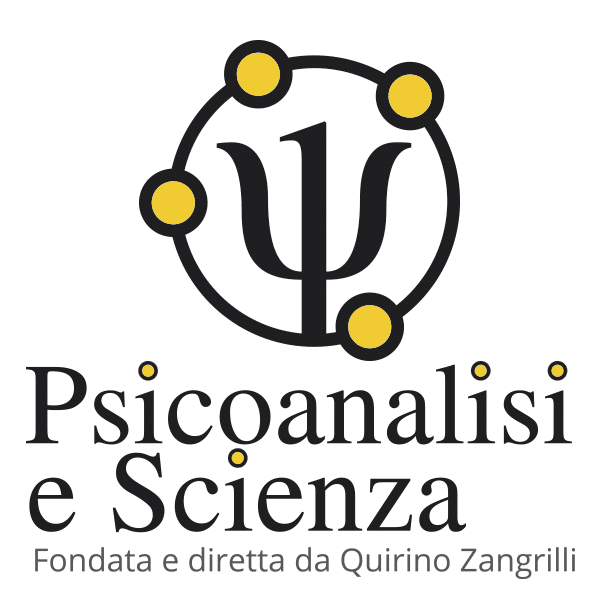(Translated by Concetta Violante)
Weeping is the new-born man’s first expressive modality. At birth the first breathing in leads to the expansion of the pulmonary alveoli and the sound emission, wailing, is considered a signal of viability. All this is assimilated to weeping.
Actually from that moment and for several weeks the baby will be making use of that sequence of repeated breathings in-prolonged expirations, combined with sharp sounds and hyperlachrymation, as the elective expression of its needs and, in a short time, of its wishes too.
When verbal language is widely acquired, well on in years too and until the end of his days, man will always have, at hand, that first non-verbal expression, which was already a sketched form of packets of emotions not easily translatable into words.
In the course of life, that is to say, man will be repeating the sequence of acts which marked the moment of his birth.
The so-called tears of joy, a rare event, everything considered, are combined with feelings of suffered ambivalence, if we see well.
Weeping can also be a fairly effective manipulating tool as it is a regressive expressive modality.
At clinic we are often witnesses of copious tears or absence of tears, which is worse, in the presence of a psychic experience of terrifying grief. We can say that the absence of weeping in important existential or pathologic situations implies a severe prognostic judgement. An example can be the serious endogenous depression, sorrow without tears, thought without affection, which can start to clear up with the appearance of weeping. During weeping the secretion of the lachrymal glands grows. These, at rest, produce modest quantities of liquid, which has the function of keeping the trophism of the conjunctiva and the cornea, and removing foreign bodies, powders and toxic insults (bacteria, virus, irritating liquids etc.).
Tears see to the washing of the eye then.
But during weeping lachrymation becomes copious and the function of tears becomes paradoxical: after a prolonged weeping the eye is reddened and the eyelids are swollen; the washing has gone over one’s intentions. We could say that the physiological function of weeping assumes a psychic task aiming at the elimination of a pre-existent tension caused by reasons which are known or ignored by the person who weeps as well.
We say that weeping tries to “clean the soul” by eliminating an excess of tension psychobiologically. In this sense it has a borderline function between soma and psyche: it is a somatic defence which is used by the psyche as well.
In summary three situations could come true.
A) Some dust really falls into the eye which needs cleaning: lachrymation is a specific action.
B) A casual meeting recalls, by association, somebody loved or lost by the subject: weeping breaks out. Or the subject uses a somatic defence to lower the tension caused by the memory of the loss, to remove some conscious psychic dust.
C) The subject himsef realizes that he has moments’ weeping without being able to identify specific motivations, or the necessity of relaxation by weeping derives from pre-conscious or unconscious reasons; we can describe two variables of this third situation:
1) weeping occurs in situations considered to be unimportant from a rational point of view;
2) weeping occurs at any moment of the day without specific stimulations, independent and without the possibility of being stopped. Or it comes directly from the unconscious and emerges as an obsessive thought which goes beyond the barriers of the secondary process and breaks out with all the force of the primary process, without the possibility of being stopped. To keep the terms used, it means that some psychic dust is repressed and the only signal of its presence is just weeping: that repression will be extremely unpleasant, loaded with tension and pain: a traumatic repression then.
SOME EXAMPLES OF WEEPING DERIVED FROM CLINICAL EXPERIENCE
RESISTANCE WEEPING
Resistance weeping prevents the patient from approaching free associations, occupies a large part of a sitting and literally stifles his/her voice. An example will be the case of a young woman probably subjected to incestuous acts until the end of her infancy, so much that she was able to refer to such material indirectly during the first meetings already.

If she had managed to let the vice of her control go, she would have been relieved of it and, in fact, that only yielding was a
balm already.
ANALYSIS END OR SYMPTOM LOSS WEEPING
During the last sittings of her personal analysis a young woman notices that she spends her days weeping. Copious tears flow also without sobs: she does not feel sad, in front of her there are several prospects she is interested in, she is adequately gratified by a sentimental relation and the monotony of work does not trouble her any longer, on the contrary she manages to find agreeable adaptations in it.But she thinks of her sister, who is elder, is well and has achieved a fair social adaptation, and weeps: she thinks that the symbiotic relation she had before is definitively dissolved; she examines and acknowledges the coercion into choices of sacrifice and hyperresponsibleness such a tie imposed unconsciously on her; she is aware of the lethal conducts she resorted to as the only way out of the yoke…… but she weeps!! The emancipation from a relation which, although neurotic, has accompanied her for all her life, leaves her in a condition of distressing bewilderment and she uses the last sittings to elaborate this loss.
After remembering an infantile nightmare reported at the beginning of work, Atlas who dropped the earth, she remarks: “I have thrown the planet away, what shall I do now?”
Weeping at the end of the analysis soothes the comparison with the sure and irreversible loneliness produced by the loss of the symptomatic packet which, in spite of making us suffer for all that part of preceding life, has also allowed us to survive: to have demolished and lost it is also a grief that must be metabolized.
ANGUISH WITHOUT WEEPING
n analysand who had gone through several autodestructive phases among which anorexia and heroin addiction, had to struggle against another lethal polarity: the psychic twin’s phantom. The elaboration of this point of the analysis, which was, in terms of overdeterminations, the most recent activation of fusion fixation, was characterized by severe anguish and expressed itself in a trnsference by producing oneiric material with a homosexual content as the expression of the desire for the symbiotic unity reconstruction. His anguish was severe and characterized his clinical picture referable, at that point of work, to a depressive form in which catastrophic thoughts were expressed by images of bleeding open wounds or of fear of a violent self-injuring act. Separation from fixation is painful: fixation is a defence, to abandon it makes one bleed. Fusion fixation does not know weeping, an activity which involves the presence of air ( of post-birth, then), but it knows the bleeding which characterizes labour, the slow breaking off of the chorial villi and, probably, pregnancy final phase during which the placenta is undergoing an involution and cooperates with this phenomenon in the induction of labour itself. Undergoing an involution means that it is not well sprinkled and this causes hemorrhagic lacunae which will then become necrotic.
To have lived the psychic experience again in the presence of the analyst allowed, in the end, the access to weeping which emerged copiously, released from specific contents: we could define it an endogenous weeping which produced the lowering of anguish, the identification with healthier images and, in the end, a fair well-being.
ENDEMIC WEEPING
Even today in the cultures which descend from the Greeks ( southern Italy, the southern Balkan peninsula and the islands in the South-East of the Mediterranean), a funeral ritual is attended by “The Mourning”, a chorus of women who spontaneously join in the sad event and mourn officially, repeating lamenting phrases which do not fail to mention the dead person. The so-called “Greek mourning” is a trace of many overdeterminations: of the classical Greek tragedy chorus, who had the function of expressing the feelings stirred up by the ups and downs of the drama; of an earlier chorus, who attended heroic personages’ funeral rites, singing their deeds; finally, of the Dionysia chorus which Maenads intoned during the bacchanal culminating in the sacrifice of a goat ( a totemic animal representing Dionysus himself).
Millenniums ago the “Greek mourning” instituted a kind of regulation of grief expressions tending to formulate relatives’ unseemly and spontaneous grief in an orderly way and protect a funeral rite, as Ismail Kadarè 1 maintains. On this subject, for example, see widows’ suicides on their husbands’ pyres in India.
In other words the Greek mourning seems to make the super-ego stronger to a cathartic-salvific purpose when facing potentially destructive tensions.
This reflection upon the normalizing function of weeping through its introduction into the cathartic rites of funeral ceremonies leads us back to its function, defined above, tending to eliminate an excess of tension and sensations of grief: then, weeping as grief regulator in mourning and in every other homeostatic variation as well.
© Gioia Marzi
NOTES:
La Dott.ssa Gioia Marzi è nata a Roma il 30 maggio 1952.
Psichiatra e micropsicoanalista, dal 1980 lavora presso il Dipartimento di Salute Mentale di Frosinone e, dal 2005, è responsabile del Servizio per i Disturbi Alimentari e Psicopatologia di Genere. Docente presso il corso di Psicologia e infermieristica in Salute Mentale – Modulo: Psichiatria – Universita’ La Sapienza – Roma. Ha una vasta esperienza di psichiatria forense in materia di violenze e abusi sulle donne e sui minori. Autrice di numerose pubblicazioni scientifiche, collabora con la rivista Scienza e Psicoanalisi curando la rubrica di psichiatria dal 1999.
Esercita a Frosinone e a Roma dal 1985.














